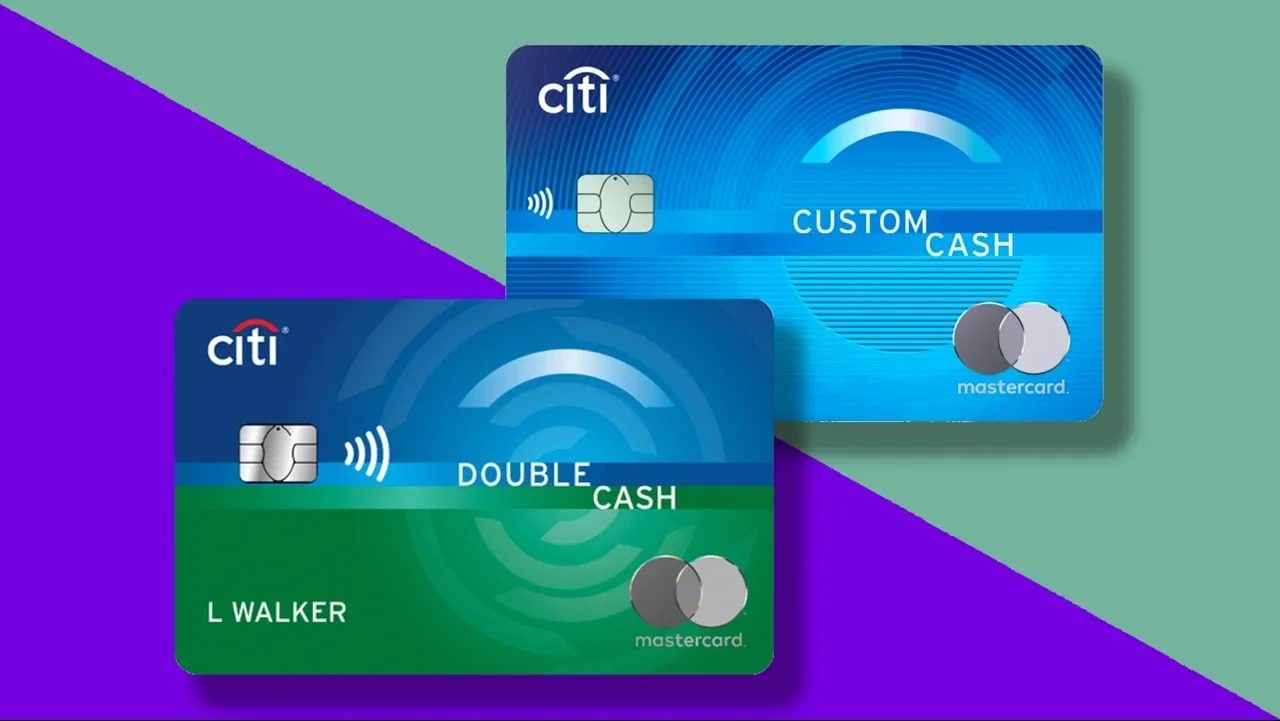

Finance
When Does My Available Credit Reset
Modified: March 10, 2024
Learn about the reset date of your available credit in finance. Understand when you can start using your credit again for future purchases.
(Many of the links in this article redirect to a specific reviewed product. Your purchase of these products through affiliate links helps to generate commission for LiveWell, at no extra cost. Learn more)
Table of Contents
- Introduction
- Understanding Available Credit
- Factors That Affect Available Credit
- Credit Card Billing Cycle
- Statement Closing Date
- Payment Due Date
- Credit Card Grace Period
- Credit Card Utilization
- Credit Card Limit Increase
- Credit Card Balance Transfer
- Impact of Credit Score on Available Credit
- Tips to Manage Available Credit
- Conclusion
Introduction
Welcome to the world of personal finance, where understanding your credit plays a vital role in managing your financial well-being. One important aspect of credit is the concept of available credit. In this article, we will explore what available credit is, how it is calculated, and the factors that can affect it. Understanding these key aspects will empower you to make informed decisions and optimize your credit usage.
Many individuals are familiar with the term “credit limit,” which is the maximum amount of money that a financial institution extends to you for borrowing purposes. Available credit, on the other hand, refers to the portion of your credit limit that is currently unused and available for use. It is the difference between your credit limit and your outstanding balance. Essentially, it represents the amount of credit you have at your disposal.
The calculation of available credit is influenced by various factors, including your credit card billing cycle, statement closing date, payment due date, credit card utilization, grace periods, and potential credit limit increases. It is essential to have a clear understanding of these factors and their impact on available credit to effectively manage your finances and avoid any negative consequences.
In the upcoming sections, we will delve into each of these factors in more detail, providing you with valuable insights to navigate the world of available credit successfully. Let’s embark on this journey to gain a deeper understanding of how available credit works and how it can be leveraged to enhance your financial stability.
Understanding Available Credit
Available credit is a crucial concept to grasp when it comes to managing your finances effectively. It represents the amount of credit you have at your disposal from a financial institution, such as a credit card issuer or a lender. Let’s explore the key components that make up available credit.
The first component is your credit limit – the maximum amount of money that your financial institution allows you to borrow. This limit is set based on various factors, including your income, credit history, and overall creditworthiness. It serves as a cap on how much you can charge to your credit card or borrow from a line of credit.
The second component is your outstanding balance – the amount of money you have charged to your credit card or borrowed from a line of credit. If you have not utilized your entire credit limit, the difference between your credit limit and your outstanding balance represents your available credit.
For example, if you have a credit limit of $5,000 and an outstanding balance of $3,000, your available credit would be $2,000. This means that you still have $2,000 of credit available for additional purchases or borrowing.
Understanding your available credit is essential for several reasons. It helps you make informed decisions about your spending and borrowing activities. It also plays a vital role in determining your credit utilization ratio, which is the percentage of your available credit that is currently being used. Credit scoring models consider credit utilization as a factor in calculating your credit score, so keeping your credit utilization ratio low can positively impact your creditworthiness.
Furthermore, knowing your available credit allows you to assess your financial flexibility. If you have a significant amount of available credit, it provides a cushion for unexpected expenses or emergencies. On the other hand, if your available credit is low, it may be an indication that you need to reassess your spending habits or consider increasing your credit limit.
In the next sections, we will explore the various factors that can affect your available credit, such as your credit card billing cycle, statement closing date, payment due date, credit card utilization, grace periods, and potential credit limit increases. By understanding these factors, you will be able to proactively manage your available credit and make informed financial decisions.
Factors That Affect Available Credit
Several factors can influence the calculation and availability of credit. It’s important to understand these factors as they can impact your overall financial management. Let’s explore the key factors that affect your available credit:
- Credit Card Billing Cycle: Your credit card billing cycle refers to the period of time between two consecutive billing statements. It typically lasts for about 30 days. During this cycle, any purchases or charges you make on your credit card contribute to your outstanding balance. At the end of the billing cycle, your statement balance is determined, which is the amount you owe to the credit card issuer.
- Statement Closing Date: The statement closing date is the date when your credit card issuer finalizes and prepares your billing statement. It marks the end of your credit card billing cycle. On this date, your outstanding balance is calculated, and it determines the amount that will be reported to credit bureaus.
- Payment Due Date: The payment due date is the deadline for making at least the minimum payment on your credit card balance to avoid late payment fees and penalties. It is typically a few weeks after the statement closing date. Paying your credit card bill in full and on time can positively impact your credit score and ensure that your available credit is not affected.
- Credit Card Utilization: Credit card utilization is the percentage of your available credit that you are currently using. It is calculated by dividing your credit card balance by your credit limit and multiplying by 100. For example, if you have a credit limit of $10,000 and a balance of $2,000, your credit card utilization is 20%. It is generally recommended to keep your credit card utilization below 30% to maintain a good credit score and optimize your available credit.
- Credit Card Limit Increase: Requesting a credit card limit increase can positively impact your available credit. If approved, a higher credit limit means a larger pool of available credit. However, it is important to use a higher credit limit responsibly and not increase your spending beyond your means.
- Credit Card Balance Transfer: Transferring your credit card balance from one card to another can also affect your available credit. By moving your balance to a new credit card with a lower interest rate, you can potentially save on interest charges and improve your credit utilization ratio.
Understanding these factors can help you manage your available credit effectively. By paying attention to your credit card billing cycle, statement closing date, payment due date, credit card utilization, and considering options like credit limit increases or balance transfers, you can optimize your available credit and maintain a healthy financial profile.
Credit Card Billing Cycle
The credit card billing cycle is a crucial component of managing your credit card accounts effectively. Understanding the ins and outs of this cycle can help you make informed decisions and optimize your available credit. Let’s dive into the key aspects of the credit card billing cycle:
The credit card billing cycle is the period during which your credit card transactions are recorded. It typically lasts for about 30 days, but this can vary depending on the credit card issuer. During this cycle, any purchases, cash advances, or balance transfers you make on your credit card contribute to your outstanding balance.
At the end of the billing cycle, your credit card issuer generates a billing statement that summarizes your card activity for that period. The statement includes details of your purchases, any fees or interest charges, as well as your outstanding balance. It is essential to review the statement carefully to ensure its accuracy and identify any unauthorized transactions or errors.
The statement closing date is a crucial date within the credit card billing cycle. It marks the end of the cycle, and on this date, your outstanding balance is determined. Any charges or payments made after the statement closing date will not be included in the current billing cycle but will carry forward to the next cycle.
Once the statement closing date passes, your credit card issuer prepares your billing statement, which is usually sent to you within a few days. The statement specifies the total amount you owe, the minimum payment due, and the payment due date.
It’s important to note that the outstanding balance on your billing statement can impact your available credit. If you have a high balance relative to your credit limit, it can reduce your available credit. On the other hand, if you pay off your balance in full before the statement closing date, your available credit will reset to your full credit limit for the next billing cycle.
Managing your credit card billing cycle effectively is crucial for optimizing your available credit. Here are some tips to make the most of it:
- Keep track of your billing cycle and statement closing date to stay informed about your credit card activity.
- Review your billing statement carefully to verify its accuracy and identify any discrepancies.
- Pay attention to your outstanding balance and strive to pay it off in full each month to avoid paying interest charges.
- Avoid making large purchases close to the statement closing date to minimize the impact on your available credit.
- Consider setting up automatic payments to ensure you never miss the payment due date.
By understanding and managing your credit card billing cycle effectively, you can optimize your available credit, maintain a healthy credit profile, and make informed decisions about your financial life.
Statement Closing Date
The statement closing date is an important date within the credit card billing cycle that impacts your available credit and plays a significant role in managing your credit card accounts. Understanding the concept and implications of the statement closing date can help you make informed financial decisions. Let’s explore the key aspects of the statement closing date:
The statement closing date marks the end of your credit card billing cycle. It is the date when your credit card issuer finalizes and prepares your billing statement for that period. The closing date can vary from one credit card issuer to another, but it typically occurs around the same date each month, often falling on the same day or within a specific timeframe.
On the statement closing date, your credit card issuer calculates your outstanding balance by summing up all the transactions made during the billing cycle. This includes purchases, cash advances, balance transfers, and any applicable fees or finance charges. The outstanding balance is the amount that will be reflected on your next billing statement.
It’s important to note that the statement closing date is not the same as the payment due date. The payment due date is the deadline for making at least the minimum payment on your credit card balance to avoid late payment fees and penalties. It usually falls a few weeks after the statement closing date.
The statement closing date is crucial because it determines the amount that will be reported to credit bureaus and impacts your credit utilization ratio. Credit utilization is the percentage of your available credit that you are currently using. A lower credit utilization ratio is generally better for your credit score, as it indicates responsible credit management.
To optimize your available credit and maintain a healthy credit profile, it is advisable to pay off your credit card balance in full before the statement closing date. By doing so, your outstanding balance will be low or zero, resulting in a favorable credit utilization ratio when it gets reported to credit bureaus.
On the other hand, if you have a high outstanding balance near the statement closing date, it can negatively impact your credit utilization ratio and potentially lower your credit score. High credit card balances can also reduce your available credit as you approach your credit limit.
It’s important to keep track of your statement closing date and understand its significance in managing your available credit and creditworthiness. Here are a few tips to consider:
- Mark your statement closing date on your calendar or set a reminder on your phone to stay mindful of when it falls each month.
- Strive to pay off your credit card balance in full before the statement closing date to keep your outstanding balance low or zero.
- Avoid making large purchases or accumulating a high balance close to the statement closing date to minimize the impact on your credit utilization ratio.
- Regularly monitor your credit card activity and review your billing statements for accuracy.
- Consider setting up alerts or notifications from your credit card issuer that inform you of your statement closing date and other important account updates.
By understanding and managing the statement closing date effectively, you can optimize your available credit, maintain a healthy credit profile, and make informed financial decisions.
Payment Due Date
The payment due date is a critical aspect of managing your credit card accounts and ensuring you meet your financial obligations on time. Understanding the payment due date and its implications is crucial for maintaining a good credit history and optimizing your available credit. Let’s explore the key aspects of the payment due date:
The payment due date is the deadline for making at least the minimum payment on your credit card balance to avoid late payment fees, penalties, and potential negative impacts on your credit history. It is typically set by your credit card issuer and specified on your billing statement.
The payment due date usually falls a few weeks after the statement closing date. For example, if your statement closing date is on the 15th of the month, your payment due date may be around the 7th of the following month. It’s crucial to be aware of this date and make timely payments to avoid any adverse consequences.
Missing the payment due date can have several negative consequences. First and foremost, late payments can result in late fees, which can add to your overall balance and increase your debt burden. Additionally, late payments can be reported to credit bureaus, potentially damaging your credit history and lowering your credit score.
When your credit card issuer reports a late payment to credit bureaus, it can stay on your credit report for several years, impacting your ability to obtain credit in the future. This can make it challenging to secure loans, apply for mortgages, or even get favorable interest rates on financial products.
Furthermore, late payments can result in the loss of promotional interest rates, rewards, or benefits associated with your credit card. Some credit card issuers may increase your interest rate to a penalty rate if you consistently miss payment due dates.
To avoid these negative consequences and manage your available credit effectively, it’s important to make timely payments on your credit card balance. Here are some tips to help you stay on track:
- Set up automatic payments: Most credit card issuers provide the option to set up automatic payments, ensuring that the minimum payment or your specified payment amount is deducted from your bank account on the scheduled due date. This can help you avoid missing payment due dates and ensure that you meet your financial obligations on time.
- Consider paying more than the minimum: While paying the minimum amount due on your credit card balance is essential to avoid late fees, interest charges, and negative impacts on your credit, it’s advisable to pay more than the minimum if you can. Doing so helps reduce your outstanding balance, minimizes interest charges, and contributes to an improved credit utilization ratio.
- Use reminders or alerts: Set reminders or use alerts on your phone or email to remind yourself of upcoming payment due dates. This can serve as a convenient way to stay on top of your credit card payments and avoid any forgetfulness or oversight.
- Make payments in advance: To ensure your payment is processed and credited to your account on time, consider making your payment a few days in advance of the actual due date. This provides a buffer in case there are any unexpected delays in processing or transferring funds.
- Review your billing statement: Carefully review your billing statement to ensure that all charges and transactions are accurate. If you notice any discrepancies or unauthorized transactions, promptly contact your credit card issuer to address the issue.
By understanding the payment due date and establishing a routine for timely payments, you can effectively manage your credit card accounts, maintain a positive credit history, and optimize your available credit.
Credit Card Grace Period
The credit card grace period is a benefit offered by credit card issuers that allows cardholders to avoid paying interest on new purchases if they pay off their balance in full by the due date. Understanding the grace period and how it works is important for managing your credit card accounts effectively. Let’s dive into the key aspects of the credit card grace period:
A credit card grace period is a period of time between the statement closing date and the payment due date during which you have the opportunity to pay off your credit card balance without incurring any interest charges on new purchases. This grace period typically lasts between 21 and 25 days, but it can vary depending on your credit card issuer and the terms of your credit card agreement.
To take advantage of the grace period, you must pay your entire balance, including any balances carried forward from previous months, by the payment due date specified on your billing statement. If you do not pay off your balance in full, you will begin to accrue interest charges on any remaining amount.
It’s important to note that grace periods do not apply to cash advances or balance transfers. Interest charges on those types of transactions typically begin accruing from the date of the transaction.
The credit card grace period provides cardholders with the opportunity to make purchases and have some time to pay off the balance without incurring interest charges. It can be a valuable tool for managing your finances and optimizing your available credit. Here are some key points to keep in mind:
- Paying off your balance in full within the grace period allows you to avoid paying interest charges on your purchases.
- The grace period starts after the statement closing date. Any purchases made after that date are included in the next billing statement and eligible for the grace period.
- If you carry a balance from the previous billing cycle, paying off only the minimum payment by the due date will not activate the grace period for new purchases. Interest charges will apply immediately to the new purchases.
- Sometimes, credit card issuers offer promotional periods with extended or enhanced grace periods. Be aware of any special terms and conditions associated with these promotions, as they may differ from the regular grace period.
- Missing the payment due date or failing to pay off your balance in full within the grace period will result in interest charges accruing on the outstanding balance.
Remember, it’s important to read and understand the terms and conditions of your credit card agreement to know what specific grace period provisions apply to your account. To make the most of the grace period and optimize your available credit, ensure that you are aware of your billing cycle, statement closing date, and payment due date. By paying off your balance in full within the grace period, you can avoid interest charges and effectively manage your credit card accounts.
Credit Card Utilization
Credit card utilization, also known as your credit utilization ratio, is an important factor that affects your available credit and overall creditworthiness. Understanding credit card utilization and its impact can help you effectively manage your credit and optimize your financial standing. Let’s delve into the key aspects of credit card utilization:
Credit card utilization refers to the percentage of your available credit that you are currently using. It is calculated by dividing your credit card balance by your credit limit and multiplying by 100. For example, if you have a credit limit of $10,000 and a balance of $2,000, your credit card utilization is 20%.
Credit scoring models, such as FICO and VantageScore, consider credit card utilization as a significant factor in assessing your creditworthiness. A lower credit utilization ratio is generally associated with responsible credit management and may positively impact your credit score.
Why does credit card utilization matter? Lenders and credit card issuers use credit card utilization to gauge how reliant you are on credit and to assess your risk level as a borrower. A high credit card utilization ratio can indicate that you are stretching your credit limits and potentially facing financial strain, which may impact your ability to make timely payments.
Here are a few key points to consider in relation to credit card utilization:
- Recommended Credit Card Utilization: It is generally advised to keep your credit card utilization below 30% of your available credit. This means utilizing less than 30% of your credit limit. For example, if your credit limit is $10,000, try to keep your balance below $3,000.
- Impact on Credit Score: High credit card utilization can lower your credit score. It is advisable to monitor and manage your utilization ratio to mitigate any negative effects on your creditworthiness.
- Affected by Individual and Overall Utilization: Both individual credit card utilization and overall utilization across all your credit cards can influence your credit score. It’s crucial to keep an eye on both measures to maintain a healthy credit profile.
- Frequent Monitoring: Regularly review your credit card balances and credit limits to accurately compute your utilization ratio. This allows you to take action if your utilization is creeping towards or exceeding the recommended threshold.
- Improving Credit Card Utilization: You can improve your utilization ratio by paying down your credit card balances, requesting a credit limit increase, or spreading your spending across multiple credit cards.
Managing your credit card utilization effectively can positively impact your credit score and optimize your available credit. By keeping your utilization ratio low and demonstrating responsible credit usage, you enhance your financial reputation, making it easier to secure favorable interest rates and credit opportunities in the future.
Credit Card Limit Increase
Requesting a credit card limit increase can be a strategic move to optimize your available credit and enhance your financial flexibility. Understanding how credit card limit increases work and their potential benefits can help you make informed decisions about managing your credit. Let’s explore the key aspects of credit card limit increases:
A credit card limit increase refers to the process of requesting and obtaining a higher credit limit from your credit card issuer. Your credit limit is the maximum amount of money that the issuer allows you to borrow on your credit card.
Requesting a credit card limit increase can have several potential benefits:
- Increased Available Credit: A higher credit limit expands your available credit, giving you the freedom to make larger purchases or carry a balance without maxing out your card.
- Improved Credit Utilization: With a higher credit limit, your credit utilization ratio decreases if you maintain the same level of outstanding balance. This can positively impact your credit score since a lower utilization ratio is typically seen as responsible credit usage.
- Financial Flexibility: A credit limit increase can provide a safety net for unexpected expenses or emergencies, as you have access to more credit if needed.
- Easier Credit Management: With a higher credit limit, you can spread your spending across multiple credit cards or consolidate balances, making it easier to track and manage your credit card accounts.
- Potential for Better Rewards: Some credit card issuers offer enhanced rewards or benefits to cardholders with higher credit limits. By increasing your limit, you may become eligible for better rewards programs or perks.
It’s essential to keep in mind that a credit card limit increase is not automatically granted. The credit card issuer assesses several factors before approving or denying a request for an increase, including your income, credit history, creditworthiness, and payment history with the card.
If you are considering requesting a credit card limit increase, here are a few tips to increase your chances of approval:
- Build a Positive Credit History: Pay your bills on time, maintain low credit card balances, and demonstrate responsible credit management. Lenders are more likely to grant credit limit increases to individuals with a solid credit history.
- Regularly Review Your Account: Keeping an eye on your credit card account and monitoring changes in your credit profile can help you gauge when it might be a good time to request a limit increase.
- Consider Your Income: Your income is an important factor in the granting of a limit increase. Make sure your income and employment information is accurate and up to date with your credit card issuer.
- Make Timely Payments: Consistently paying your credit card bills on time signals responsible credit behavior and strengthens your case for a limit increase.
- Contact Your Credit Card Issuer: Reach out to your credit card issuer to inquire about their process for requesting a credit limit increase. They can provide specific details and instructions on how to proceed.
Requesting a credit card limit increase can be a strategic move to optimize your available credit and financial flexibility. By understanding the benefits and considering the factors involved, you can make an informed decision about whether to pursue a limit increase and take the necessary steps to maximize your credit card benefits.
Credit Card Balance Transfer
A credit card balance transfer allows you to move an existing credit card balance from one credit card to another, typically with the aim of obtaining a lower interest rate or better terms. Understanding how credit card balance transfers work and their potential benefits can help you optimize your available credit and save on interest charges. Let’s explore the key aspects of credit card balance transfers:
During a credit card balance transfer, you initiate a process by which your outstanding balance on one credit card is transferred to another credit card, typically with a different issuer.
The primary motivation for initiating a balance transfer is to take advantage of a promotional interest rate offered by the new credit card issuer. These promotional rates are often lower than the interest rates on your existing card, allowing you to save on interest charges and potentially pay off your debt faster.
Here are some potential benefits of a credit card balance transfer:
- Lower Interest Rates: The most common motivation for a balance transfer is to secure a lower interest rate. By transferring your balance to a card with a lower rate, you can save on interest charges and pay off your debt more efficiently.
- Consolidation of Debt: If you have balances on multiple credit cards, a balance transfer allows you to consolidate them into one card, making it easier to manage and track your debt.
- Simplified Monthly Payments: By consolidating your balances, you only need to make one monthly payment, rather than managing multiple payment due dates.
- Reduced Financial Burden: Lowering your interest rate through a balance transfer can alleviate some financial stress and potentially save you money in the long run.
It’s important to note that credit card balance transfers often come with transfer fees, which are typically a percentage of the transferred balance. Additionally, promotional interest rates may have an expiration date, after which the interest rate may increase significantly. Therefore, it’s crucial to read and understand the terms and conditions associated with the balance transfer offer.
Here are some key considerations when contemplating a credit card balance transfer:
- Promotional Interest Rates: Review the length of the promotional period and the interest rate that will apply after it ends. Consider whether you can pay off the balance within the promotional period to maximize the benefits.
- Transfer Fees: Take into account any fees associated with the balance transfer. Calculate whether the potential savings in interest charges outweigh the cost of the transfer fee.
- Impact on Credit Score: The act of initiating a balance transfer may impact your credit score temporarily. However, if you make timely payments and manage the new card responsibly, it may have a positive impact on your credit score in the long run.
- Eligibility: Ensure that you meet the criteria set by the new credit card issuer for balance transfers. This may include factors such as credit score, income, and creditworthiness.
If you decide a credit card balance transfer is suitable for your financial situation, contact the new credit card issuer to initiate the process. They will guide you through the necessary steps, including providing your existing card details and specifying the amount of the balance you wish to transfer.
A credit card balance transfer can be a strategic move to optimize your available credit and save on interest charges. By evaluating the benefits, fees, and terms associated with a balance transfer, you can make an informed decision that aligns with your financial goals.
Impact of Credit Score on Available Credit
Your credit score plays a significant role in determining your available credit and overall borrowing capacity. Lenders and financial institutions use credit scores to assess your creditworthiness and determine the risk associated with lending you money. Understanding how your credit score affects your available credit is crucial for managing your finances effectively. Let’s explore the key aspects of this relationship:
A credit score is a numerical representation of your creditworthiness, reflecting how likely you are to repay your debts on time based on your credit history. It is calculated using various factors, including payment history, credit utilization, length of credit history, new credit, and credit mix.
When assessing your creditworthiness, lenders and credit card issuers often consider both your credit score and credit report. Your credit score helps them quickly evaluate your creditworthiness, while your credit report provides detailed information about your credit history.
How does your credit score impact your available credit?
- Credit Card Approvals: A high credit score increases your chances of being approved for new credit cards, which can further increase your available credit. Lenders are more likely to extend credit to individuals with a proven track record of responsible credit management.
- Credit Limit Determination: When evaluating your creditworthiness, lenders use your credit score as a factor in determining the credit limit they will assign to you. A higher credit score may result in a higher credit limit, giving you more available credit to utilize.
- Interest Rates: Your credit score can also influence the interest rates you are offered for credit cards and loans. With a higher credit score, you may be eligible for better interest rates, which can save you money and make credit more affordable.
- Credit Utilization: Your credit score is closely tied to your credit utilization ratio, which is the percentage of your available credit that you are currently using. Keeping your credit utilization ratio low, typically below 30%, can positively impact your credit score and enhance your creditworthiness.
It’s important to note that maintaining a good credit score requires responsible credit management. Here are some key practices to help you maintain and improve your credit score:
- Make timely payments: Paying your bills on time is one of the most important factors in building and maintaining a good credit score. Late or missed payments can have a negative impact on your creditworthiness.
- Keep credit card balances low: Aim to keep your credit card balances well below your credit limit. This demonstrates responsible credit usage and helps keep your credit utilization ratio low.
- Manage credit accounts wisely: Avoid opening too many new credit accounts within a short period, as it may be viewed as a sign of financial instability. Choose credit products that align with your financial goals and needs.
- Check your credit report regularly: Regularly review your credit report to ensure the information is accurate and up to date. Dispute any errors promptly to maintain the integrity of your credit history.
- Use credit responsibly: Avoid maxing out your credit cards or relying heavily on credit. A balanced approach to credit utilization showcases your ability to manage credit responsibly.
By understanding how your credit score impacts your available credit, you can take proactive steps to maintain a healthy credit profile. By practicing responsible credit management, paying bills on time, and keeping your credit utilization low, you can improve your credit score, increase your available credit, and achieve your financial goals.
Tips to Manage Available Credit
Effectively managing your available credit is crucial for maintaining a healthy financial profile and maximizing your borrowing capacity. Here are some valuable tips to help you manage your available credit responsibly:
1. Create a Budget: Start by understanding your income, expenses, and financial goals. Develop a budget that allows you to allocate your available credit wisely and prioritize your spending based on your needs and priorities.
2. Track Your Spending: Keep a close eye on your credit card transactions and regular expenses. Monitoring your spending patterns can help you identify areas where you can cut back or adjust to ensure you stay within your means and maintain a healthy credit utilization ratio.
3. Pay On Time, Every Time: Make timely payments on all your credit accounts, including credit cards and loans. Late or missed payments can negatively impact your credit score and limit your access to credit in the future. Set up reminders or automatic payments to avoid missing due dates.
4. Pay More than the Minimum: If possible, pay more than the minimum payment due on your credit card balances. By paying off more of the principal, you reduce your outstanding balance faster, decrease interest charges, and improve your credit utilization ratio.
5. Keep Credit Utilization Low: Aim to keep your credit utilization ratio below 30% of your available credit. Be mindful of your spending habits and avoid maxing out your credit cards, as high credit utilization can negatively impact your credit score.
6. Avoid Unnecessary Debt: Use credit responsibly and avoid taking on unnecessary debt. Evaluate the necessity and affordability of purchases before charging them to your credit card. Consider utilizing cash or debit for smaller transactions when feasible.
7. Regularly Review Your Credit Reports: Check your credit reports from the major credit bureaus (Equifax, Experian, and TransUnion) regularly. Reviewing your credit reports allows you to identify any errors or discrepancies and take the necessary steps to correct them promptly.
8. Consider Credit Limit Increases: If you have a history of responsible credit management, you may request a credit limit increase from your credit card issuer. A higher credit limit can increase your available credit and improve your credit utilization ratio if you maintain a low balance.
9. Be Cautious with Credit Applications: Applying for multiple credit accounts within a short period can bring down your credit score and raise concerns about your financial stability. Only apply for credit accounts that you genuinely need and consider the potential impact on your credit.
10. Monitor Your Available Credit: Keep a close eye on your available credit and act proactively to manage it effectively. Regularly review your credit card statements and available credit limits to ensure there are no discrepancies or unauthorized charges.
By implementing these tips, you can proactively manage your available credit, maintain a good credit score, and enhance your financial stability. Responsible credit usage and effective management of available credit are key pillars to building a solid financial foundation and achieving your financial goals.
Conclusion
Managing your available credit is a fundamental aspect of maintaining a healthy financial profile. Understanding the factors that affect available credit, such as credit card billing cycles, statement closing dates, payment due dates, credit card utilization, credit score impact, and potential credit limit increases, empowers you to make informed decisions about your finances.
By effectively managing your available credit, you can optimize your credit utilization ratio, maintain a good credit score, and enhance your borrowing capacity. Responsible credit card usage, timely payments, and keeping credit card balances low are key practices to maintain a positive credit history while maximizing your available credit.
Regularly reviewing your credit reports, monitoring your spending, and staying within your budget are essential for maintaining financial discipline and ensuring that your available credit works in your favor. Taking advantage of credit card benefits like grace periods and balance transfers can also help you save on interest charges and improve your overall financial health.
Remember, it’s important to use credit responsibly and avoid taking on excessive debt. Monitoring your credit card balances, prioritizing your spending, and staying within your means will help you maintain your financial well-being and leverage your available credit wisely.
By implementing the tips and strategies outlined in this article, you can successfully manage your available credit, enhance your financial stability, and set yourself up for long-term financial success. Embrace these practices and take control of your credit, allowing it to serve as a valuable tool in achieving your financial goals.














